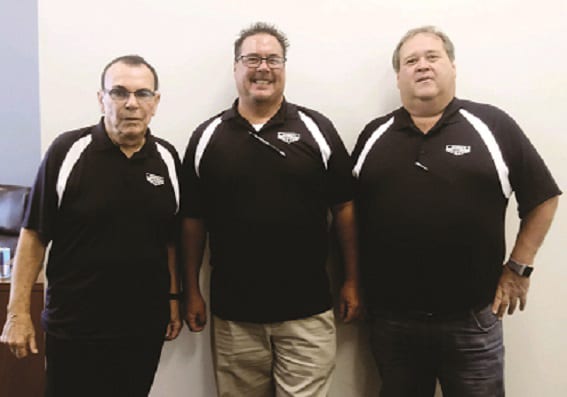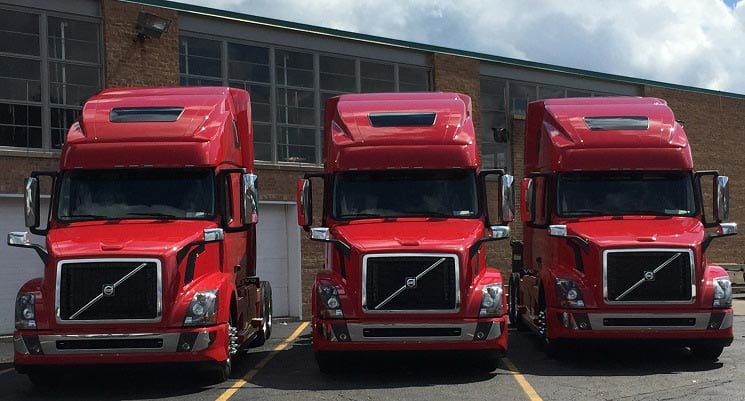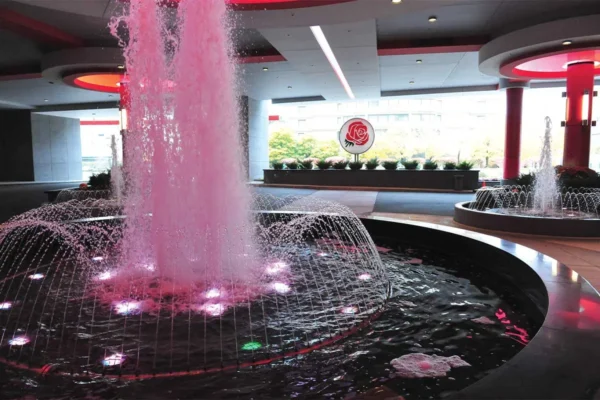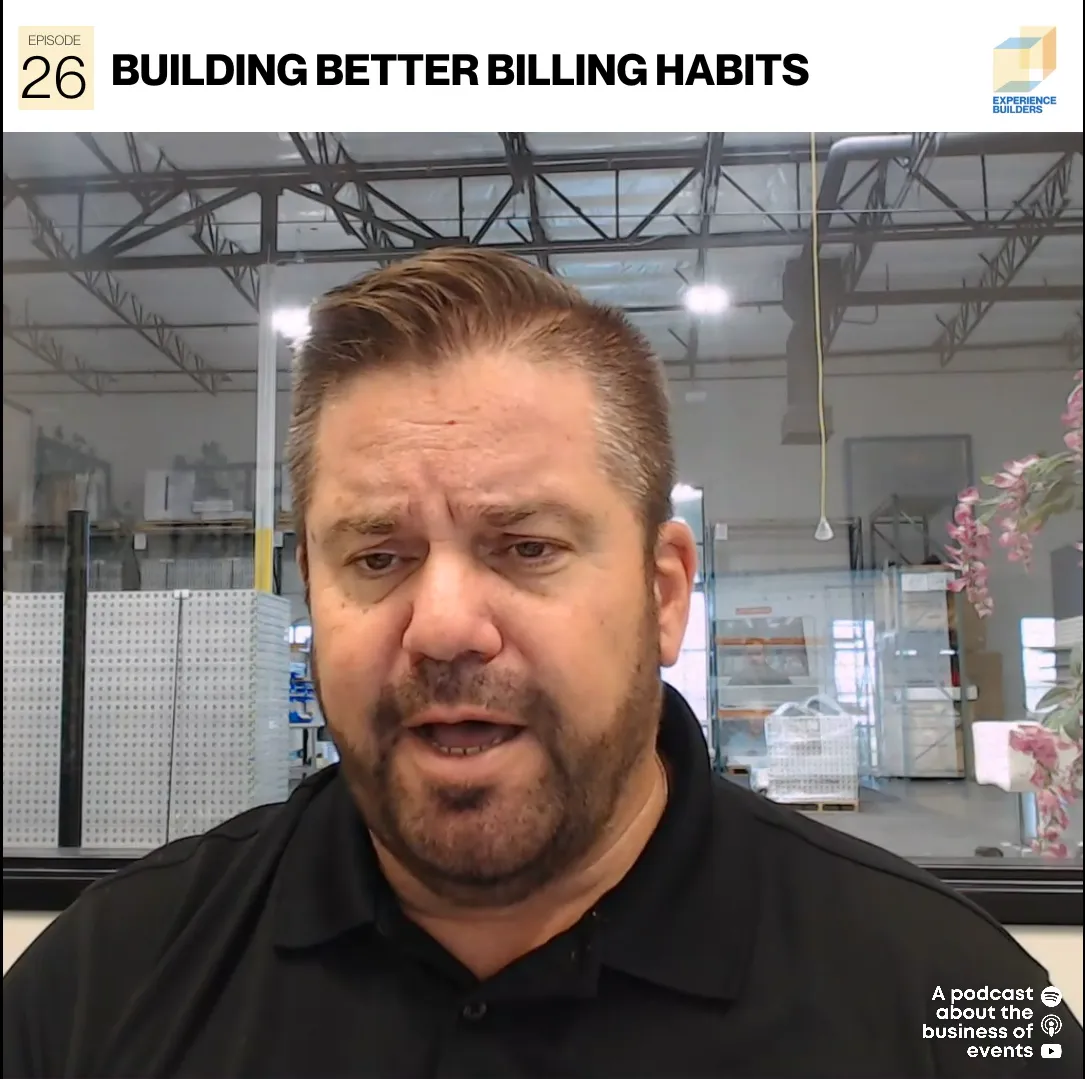by Cynthya Porter
A tradeshow program is only as good as the shipper that gets the exhibit materials to the hall, as transportation is the first, and sometimes most freakish place where things can go wrong. After all, troubles at the show are at least contained within a building’s square walls where they can be dealt with head on. But snafus with shipping are contained only within the confines of the universe, with freight that can end up God knows where with everything from Mother Nature to moving violations standing between a shipment and its space on the show floor.
So it stands to reason that choosing a transportation provider could fairly be called one of the most important decisions a tradeshow manager can make, and one of the most painful decisions if done poorly. Making matters more difficult, there are a mind-numbing number of transportation companies offering to move freight for tradeshows, and sifting through them in search of a suitable partner can be an exhausting and baffling exercise in frustration.
But shipping experts have some rules of thumb to offer that, when followed, may provide a greater sense of confidence in the shipper that is eventually chosen. And while nothing can guarantee a perfect freight transportation experience 100 percent of the time, the security of knowing the decision was sound is sometimes, at least in this industry, the best you can do.
 It is often said that success working in the exhibition industry can be tied directly back to relationships, and nowhere is that more true, says RJ Faherty (pictured right is the Veterans Logistics team, L-R: RJ Faherty, Paul (Tomo) Meeks, owner/pres. & Jim Anderson, VP of sales), than in the transportation sector. With 40 years in the business, Faherty, who is an advisor for the freight coordinator Veterans Logistics, says exhibit managers looking for a shipper or logistics provider should look to the longevity and experience of the individuals running a company. It is relatively easy, he explains, for companies that provide less than quality services to fold, only to have owners or officials reconstitute themselves under a new company name. As such, he believes, it is important to understand who is behind the curtain and what their reputation in the industry is like.
It is often said that success working in the exhibition industry can be tied directly back to relationships, and nowhere is that more true, says RJ Faherty (pictured right is the Veterans Logistics team, L-R: RJ Faherty, Paul (Tomo) Meeks, owner/pres. & Jim Anderson, VP of sales), than in the transportation sector. With 40 years in the business, Faherty, who is an advisor for the freight coordinator Veterans Logistics, says exhibit managers looking for a shipper or logistics provider should look to the longevity and experience of the individuals running a company. It is relatively easy, he explains, for companies that provide less than quality services to fold, only to have owners or officials reconstitute themselves under a new company name. As such, he believes, it is important to understand who is behind the curtain and what their reputation in the industry is like.
 In addition, says Joe Martillaro (pictured left), managing director at Superior Logistics, a potential shipper should be willing to disclose who else they are moving freight for. “The easiest way to insure you are engaged with a transportation partner that understands the complexities of exhibit transportation is to find out who else they are working with,” he explains. “It should be very clear from their roster of clients and their industries served to determine if they truly understand show and event logistics.”
In addition, says Joe Martillaro (pictured left), managing director at Superior Logistics, a potential shipper should be willing to disclose who else they are moving freight for. “The easiest way to insure you are engaged with a transportation partner that understands the complexities of exhibit transportation is to find out who else they are working with,” he explains. “It should be very clear from their roster of clients and their industries served to determine if they truly understand show and event logistics.”
 While it might seem like shipping is shipping, experts say there are important reasons to work with a company that truly specializes in the exhibition and event industry. “Shipping for tradeshows is very complex,” explains Jason Olinger (pictured right), a director in exhibit sales and operations for YRC Freight Inc. “It’s probably the most complicated kind of shipping there is, so it’s important to hire someone that understands the rules of engagement for tradeshows and specializes in them.”
While it might seem like shipping is shipping, experts say there are important reasons to work with a company that truly specializes in the exhibition and event industry. “Shipping for tradeshows is very complex,” explains Jason Olinger (pictured right), a director in exhibit sales and operations for YRC Freight Inc. “It’s probably the most complicated kind of shipping there is, so it’s important to hire someone that understands the rules of engagement for tradeshows and specializes in them.”
There is a vast difference between a shipping company that has delivered freight to a tradeshow on occasion and one that makes a considerable part of its livelihood doing so. “An easy method to determine if your potential carrier partner is a legitimate solution is to insure that they use appropriate industry jargon,” Martillaro says. “Your carrier should easily know terms like target time, marshalling yard, general service contractor, material handling agreement, etc. The carriers that really work in this industry and can be trusted with exhibit freight live and breathe these terms.”
In addition to knowing the terminology, a freight company’s ability to successfully navigate the complexities of targeted move-in dates, marshaling yards, loading docks and advance receiving warehouses is what sets it apart from shippers serving any other business sector, says Olinger. “If someone chooses a carrier that doesn’t understand the rules, they might get there at the wrong time and then have to wait all day,” he explains. “Drivers may be very unhappy if they show up and don’t understand that they have to sit in line for seven or eight hours.”
Looking into the owners of a company, their client list and their grasp of industry terminology is a good start to vetting transportation providers, but it’s not enough to base a decision on, the men say. Asking for references or contacting companies on their client list on your own is a deeper dive that can net information about a company’s past performance. There is a difference between current clients and former clients, so distinguishing which is which and asking why former clients left can be illuminating as well.
A well-established freight firm will also have the ability to provide other useful services, Faherty says, such as warehousing materials for a client rather than shipping them back and forth to the same city over and over. Given the number of things that can interfere with a seamless freight experience, a good freight partner will suggest and facilitate that storage rather than shipping even if it means they are making less revenue from the customer, he explains, because it is better for the client. “It’s way more secure to go across town than across the country,” he says.
Also important when evaluating potential partners is to understand how a company is structured, Martillaro says. “Ask them what type of equipment they have access to and if they are a broker or an asset-based firm,” he suggests. “Firms that only operate with third-party equipment often struggle from a control and performance perspective with show freight,” he explains. “Additionally, carriers without their own equipment will often be more expensive as opposed to asset-based carrier partners.”
The key is the depth of the partnerships a firm has in the industry, Faherty says. Having access to a fleet of 1,000 trucks via its partnership with American Road Lines is a distinct advantage for Veterans Logistics over similar logistics or trucking companies, he explains, because it means equipment-related problems are not a factor to the extent they could be for a smaller freight mover with a limited fleet.
While experts all agree that this is not a good industry to bargain shop for providers in and one where size may matter, they say it is important to look at comprehensive quotes from several companies to really compare costs and services that might not be readily apparent. For example, Olinger says, YRC Freight has such a large tradeshow division that it can sometimes be priced highly competitively depending on which shows a potential client will attend. “Someone who doesn’t do many shows might take two shipments to a show, and I might have 200 to the same show,” he says.
Also, says Martillaro, it’s hard to speculate on the potential costs when using a provider without significant tradeshow experience, because there are a number of mistakes they can make that will cost you money. “There is nothing worse than engaging with a less expensive carrier on paper who really does not understand how the process of checking in and retrieving or delivering freight to a convention center or hotel works,” he says. “The cost of an error on either side of the ledger in delayed labor, damages or even missing a show is simply too high to compare.”
Providing comprehensive information to a potential shipping partner will help them deliver a more accurate quote, so the search for a shipping company should actually start with a clear appraisal of the weight and size to be shipped and the destinations the materials are headed for.
That inward look should include a review of internal processes that may interfere with timely shipments–one of the most controllable calamities affecting tradeshow shipping–as well as an assessment of freight packaging that may push costs higher than they need to be, Martillaro says. “Delays in fabrication or design approval often drive shipping transits too tight,” he explains, noting that the associated costs for expediting shipping and the panic that usually accompanies it can lead to an unpleasant experience. “Another factor that we are often discussing with our clients is the dimensions of the crates and skids. It is important to keep in mind that keeping skid and crate widths at 49-50 inches allows for two items to go side by side, thereby allowing for the maximum amount of truck space to be utilized. This can allow exhibitors to save money,” he explains.
There are certain things that exhibit managers should expect to pay money for and gladly, because it will generally result in a better outcome for a tradeshow shipment specifically. For example, it might cost more to use temperature-controlled trailers or rigs with air shocks, says Faherty, but those vehicles are designed to transport fragile freight while common-carrier vehicles are not. Also, adds Martillaro, companies that specialize in show freight will have straps and bars on the vehicles that are designed to secure delicate items.
Computer systems for shipping companies are very costly, says Faherty, sometimes costing a half million dollars or more for a good one, but the value they return to the client is incalculable. When considering shipping partners, he says it’s important to ask about their ability to track a shipment down to a pinpoint every hour of the day around the clock.
Martillaro agrees. “A tradeshow carrier needs to be communicating check-in numbers and driver status in real time,” he says. “In 2019, if your carrier cannot transmit load times, check-in numbers and piece counts in real time, you are selling yourself short.”
But even with all the rules of thumb employed in choosing a shipping partner, sometimes disaster strikes even the most highly regarded shippers. “It happens to the best of them,” Faherty admits. How a company is poised to deal with disaster, however, is what can set them apart from the rest. “The most important thing, if there is a problem, is that you don’t wait for the customer to call you,” he says. “Conversation is essential for addressing any issues that might arise if you don’t want your customers to be angry.”
Communication, along with creative problem solving and a commitment to service, are the keys to being a good partner, Martillaro believes. And also, a company needs a deep well of resources for addressing unexpected situations. “The best carriers understand that failure is not an option,” he says.
“There are bad companies out there, no question about it,” Faherty says, but he believes that many of the freight moving companies in the exhibition industry are good, as well as very similar. It is an industry where the devil is in the details. “We’re more or less the same as every other company and we can all say the same things, so what you have to do is deliver,” he says. “The reality is that you can move 100 shipments perfectly and screw up on one, and that’s what people are going to remember. To build relationships, you have to continually prove yourself because, as we say in this business, you’re only as good as your last shipment.”
This story originally appeared in the January/February issue of Exhibit City News, p. 30-33. For original layout, visit https://issuu.com/exhibitcitynews/docs/ecn_flipbook_janfeb2019web?e=16962537/66750078























